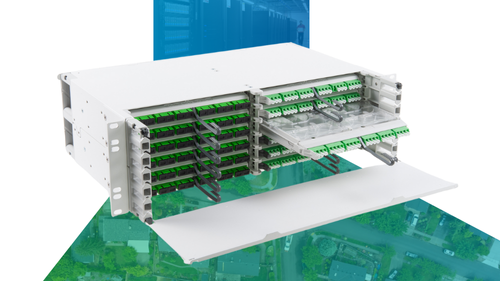 The current model of cable advertising has been successful and relatively stable for many years. But, as video technology evolves from multicast transport stream delivery to Adaptive Bitrate (ABR) over IP, cable operators are looking to capitalize on the flexibility and improved targeting capabilities of IP video without leaving their existing investments to languish.
The current model of cable advertising has been successful and relatively stable for many years. But, as video technology evolves from multicast transport stream delivery to Adaptive Bitrate (ABR) over IP, cable operators are looking to capitalize on the flexibility and improved targeting capabilities of IP video without leaving their existing investments to languish.
In the face of increasing competition from OTT vendors, traditional Pay TV operators are feeling the pressure to adapt and build a bridge to IP. But what does that migration look like? CommScope has identified three key steps to building a better ad business:
Optimizing Legacy Advertising
Linear ad delivery is still around because it works. The majority of Pay TV customers watch TV over a standard cable or IPTV service. The eyeballs are here and the ad dollars are here. CommScope knows this well—our advertising solutions serve 70% of the Set top boxes (STBs) in North America.
However, as operators know full well, traditional linear ad insertion lacks the dynamic decisions and addressability of OTT and IP video services… But this is changing.
CLICK TO TWEET: CommScope’s Jim Owens explains what service providers should know about the future of IP advertising.
More Dynamic Decisions
Existing ad servers can be optimized to support dynamic ad decisions, leveraging a centralized Ad Decision Service (ADS). With these enhancements, operators can :
- Sell inventory at the last minute that currently goes unsold.
- Increase the value of their existing ads.
- Enable campaigns that insert ads across multiple devices in a single ad buy.
Improving Targeting
In addition to reaping the low-hanging fruit of software-based ad decisioning, operators can tap into the revenue opportunity associated with improved ad targeting. Geographic-based targeting can leverage network improvements, like Distributed Access Architectures (DAAs), as operators push video functions from the edge QAM to the node. Because the shift to DAA moves the edge modulation deeper into the network—which often coincides with reduced service group size—ad zones can be dramatically more targeted. Another way to create these “microzones” is by using Switched Digital Video (SDV) and targeting ads to SDV service groups.
By improving targeting, operators can:
- Increase the value of their ads, generating higher CPMs and therefore more revenue.
- Grow their video ad market, by enabling new advertisers to participate in targeted campaigns.
- Unlock billions of dollars in ad spend that rely specifically on highly localized ad targeting and demographic micro-zones, such as political campaigns.
These improvements are part of the Programmable Network—CommScope’s term for a dynamically configured network that supports ad zones optimized with software, rather than hardwired like today’s networks.
Together, these optimizations can greatly improve the effectiveness and value of existing advertising platforms, ready the migration to IP through ADS integration, and start the process of selling ads in a more dynamic way
Migrating to IP
The key to success in IP ad delivery is making a seamless transition. IP ad delivery utilizes entirely different technology. IP ad sales use a different buying model. And IP ad selection works differently. Operators need a strategy to get up to speed on IP while maximizing their legacy businesses.
By moving to IP, operators can charge much more for addressable ads—studies estimate up to 4-5 times more than for a regular ad. They can target down to the individual user. And they can optimize ad delivery in real-time. This means higher ROI and the ability to capture new, hyper-targeted ad revenue streams.
First movers to this space will be in a position to lead when IP takes off over the next few years. But successful players must be able to transition smoothly from MPEG-2 transport stream to ABR platforms. That agility comes from partners with a deep understanding both legacy and IP sides of the business.
We’ve worked with some of the world’s leading operators to make this transition, and we’ve observed that the following steps can help make that process successful:
- IP Parity – Begin by extending your current linear ads to your IP devices using a manifest manipulation solution that’s designed for the needs of Pay TV, like the CommScope Manifest Delivery Controller. This approach, often referred to as IP Parity, allows operators to leverage their current advertising processes and business models while getting experience in IP ad insertion. Scheduled ads get inserted in the same content and ad zones as they do today, only they also appear on IP devices.
- IP Native – Then leverage this IP ad insertion stack, along with the wealth of subscriber data you manage, to take advantage of the full power of addressable IP advertising: targeting by audiences and shifting your business model to sell by impressions.
- Partnerships – Finally, once you’ve begun to optimize the local ad avails allocated to operators, explore options for partnering with other content owners to insert addressable ads on national breaks. This combines the ad sales and brand strengths of national television properties with the targeting capabilities of the service provider network—and greatly expands the operator advertising revenue opportunity.
Unifying Ad Systems
Along with putting a full-IP ad delivery system in place, there is an opportunity to simplify the ad delivery path to eliminating redundant components—reducing costs and maximizing revenue.
By unifying ad decisioning, ad insertion, and the video workflow behind it, operators will be able to deliver any ad on any stream or channel to any device, with a new level of intelligence and relevancy. On top of that, unification also captures key efficiencies from:
- Replacing traditional ad server and ad splicer hardware with virtualized solutions.
- Eliminating dual paths for video processing.
- Carrying IP-native ABR video from end-to-end, with traditional streams for Cable QAM STBs generated on-demand.
This is enabled by solutions like CommScope’s Unified Ad Insertion platform that generates new targeted QAM video channels from ABR video, captures audience measurement data from the network, and simplifies video processing by standardizing on ABR ads, ABR linear content, or both.
IP ad delivery represents a new world of opportunity for operators. The most successful will be those who act early, have a clear strategy for transition, and partner with vendors who have deep experience in both legacy and IP platforms. If you’re ready to begin planning the next steps for your advertising business, contact us here.
A version of this blog ran in first ran May 2021 on Streaming Media.














